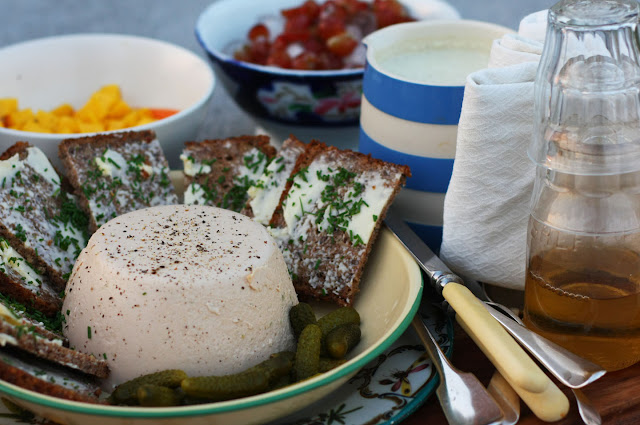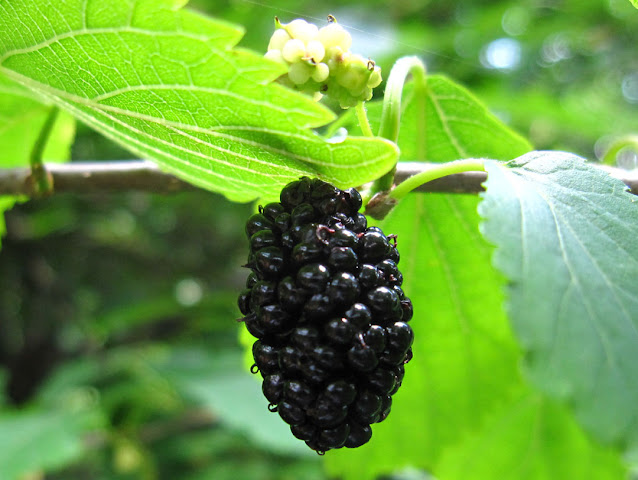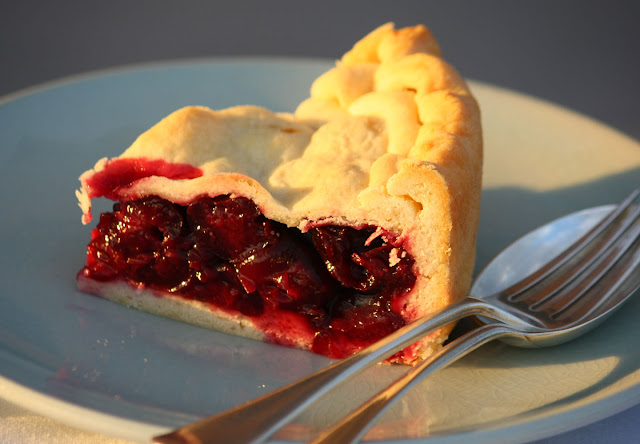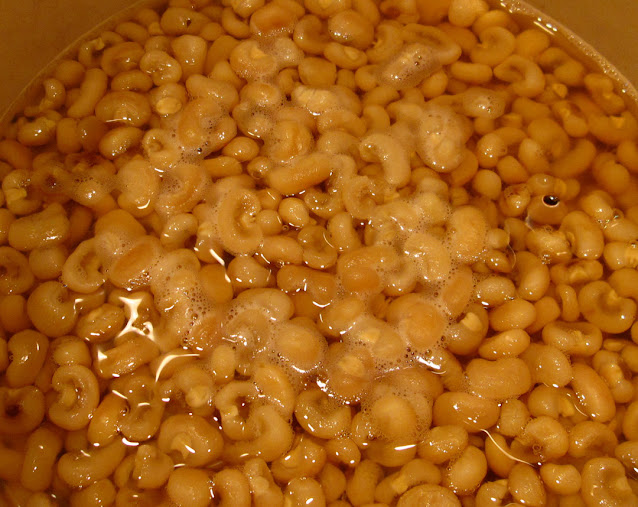[Updated from May, 2019]
I began making pine cone jam in May 2019 (I posted about it @66squarefeet on Instagram) after a wonderful shoreline walk on the edges of New York City, where I noticed tiny-tiny baby pine cones. I was actually hunting for pine pollen, but these petite cones intrigued me. They were much tinier than the larger green cones I'd used before to make fermented syrup. I collected a little bagful.
Looking for ideas back at home, I chanced upon a reference to this jam, and one helpful recipe that noted Georgian heritage. I also scoured searched my Russian and Georgian cookbooks, but came up with nothing. At the time there was very little online. Although I did find bottles of pricey mugolio. It's the richly-flavored syrup that forms during cooking the young pine cones and sold in Italy - the name taken from the pine species Pinus mugo. My first Instagram posts about the jam exploded, and the recipe I posted back then may have nudged things along quite rapidly, online: You will now find many more recent posts and videos.
Russians like it. Eastern Europeans like it. Turks seem to like it. Pine cone jam (sometimes the resulting syrup is referred to and sold as pine honey) is considered treat and medicine. Used for coughs.
The flavor is tartly sweet, resinous, and the "honey" is like molasses licked from a spoon in a pine forest. It's really nice in drinks.
And it's hard to imagine that the hard little cones become soft and chewable after cooking, but they do.
A traditional Caucasian and Russian way to enjoy them is as a medicinal spoonful stirred into hot black tea. I like them dotted sparingly on crunchy toast atop labneh. Their honey-slash-syrup is delicious roasted with carrots and other root vegetables, stirred into the pan juices to pour over pan-seared pork chops, or duck breast (perhaps deglazed with some bourbon or fruity vinegar), or for dessert, mixed with the first strawberries.
There is always ice cream!
To make pine syrup gin or vodka, add a quarter cup of the syrup with cones to 2 cups of the liquor. Leave for a day, shaking now and then, until the syrup has dissolved. Strain and bottle. It makes noteworthy seasonal cocktails.
The pine cones I collect are mostly from exotic Japanese black pine (Pinus thunbergii), popular in local seashore landscape and park plantings because of their salt-tolerance. Native pitch pine (Pinus rigida) occurs, too (its little cones are very sharp and rough on the fingers).
You want immature, small cones, green inside.
While you work, it helps to have rubbing alcohol handy: Your fingers get very sticky, and the alcohol is very effective at dissolving the resin. For clean up after cooking, use rubbing alcohol, again, or mineral oil, to dissolve the very tenacious resin residue on the edges of your pot and any implements you use.
The first time I made the jam I experimented with five different batches. For the first three I boiled the cones in water (to remove some resin), then another three times in syrup, in the tradition of Russian varenye, where entire fruits are cooked and cooled - important - multiple times in syrup.
I also boiled four and five times, and for the final batch made the jam without the water bath, and using honey instead of sugar. That last version was much more resinous when cool, above! It all got stuck. I liked them all, but four seems the magic number, to me.
The point is that the jam needs to come to a boil often enough for the green cones to be pleasantly chewable, so the number of boil-cools will vary, depending on big your baby pine cones are. Do not skip the cooling. It's time-consuming, but will result in delicious pine cones, rather than hard nuggets.
Pine Cone Jam
For three 1-cup capacity jars of pine cone jam you need:
8 oz (about 2.25 cups) finger-nail-sized immature pine cones*
6 cups water
2 cups sugar
*I've made jam with much larger cones, too. Their size matters less than green-ness.
If the baby cones still have a piece of stem attached, remove it. Left on it will become tough during the cooking process. Sometimes I skip this part but always regret it! (It's sometimes easier to do this after the boiling step, below.)
The Pre-Boil: Place the pine cones in a pot, cover with water and bring to a boil. Cook at a gentle boil for 5 minutes. Turn the heat off. A layer of resin will collect on the surface like a little oil slick - carefully scoop his layer off, and discard. Then drain the pine cones.
The Jam: Once all the water is poured off, add the 2 cups of sugar and the 6 cups of water to the pot with the boiled cones. Stir. Return to the stove and bring to a boil. Reduce the heat so that the liquid simmers. Cook at a simmer for 5 minutes. Turn off heat and cool completely.
When the mixture is cool, bring to a boil again, for 1 minute. Turn off and cool.
Bring to a 1-minute boil for a third time, turn off the heat, then cool again. Repeat these steps until the liquid has transformed from watery to syrupy.
Now test a cone. Is it chewable?
If it is you can stop, and bottle the cones with their dark 'honey' in sterile jars. Or repeat the boil-cool steps until they have softened more and the honey is thick. It can take from five to eight boils, in my experience.
_____________
Find more wild foods and recipes in my book:
Forage, Harvest, Feast - A Wild-Inspired Cuisine
































